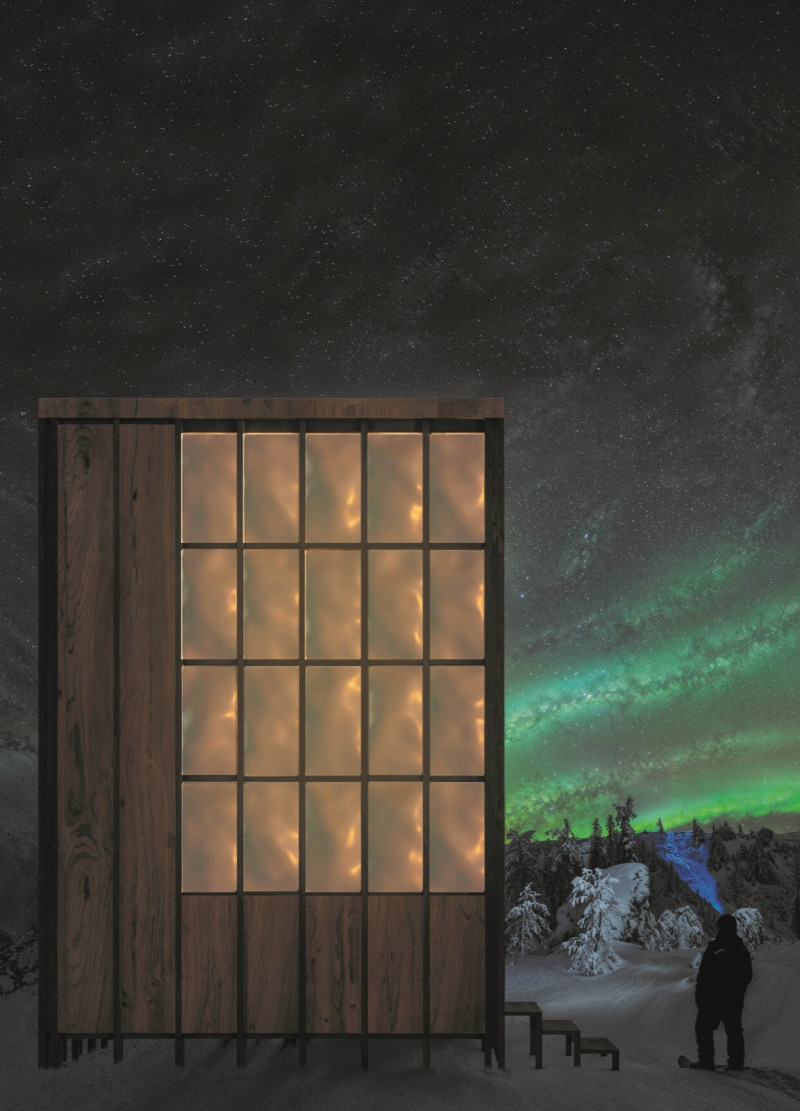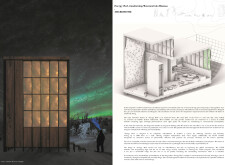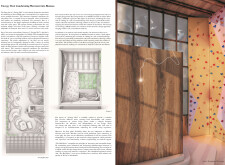5 key facts about this project
### Overview
Located in a visually distinct geographical context, the "Energy Bed" project represents a forward-thinking approach to sustainable micro-living. The design aims to create a self-sufficient living environment that addresses modern environmental challenges while fostering a deep connection with nature. Integrating advanced technology with sustainable practices, this microhome exemplifies resourcefulness and functionality, providing a versatile living space.
### Spatial Strategy
The layout prioritizes flexibility and user interaction, featuring an adaptable floor plan that maximizes the utility of limited space. Large windows facilitate abundant natural light, creating a continuous connection between interior spaces and the surrounding environment. The design includes multifunctional elements, such as a climbing wall and modular seating, which encourage physical activity and engagement, effectively supporting a dynamic lifestyle.
### Materiality and Environmental Integration
A commitment to sustainability is reflected in the selected materials. The primary structural component is sustainably sourced wood, which contributes to a harmonious aesthetic and low environmental impact. Additionally, the building features photovoltaic panels for energy production, alongside biomaterials such as ethylene tetrafluoroethylene (EPTE) for air purification. Glass panels enhance natural lighting and visual engagement with the landscape, while algae-based systems promote ecological efficiency, reinforcing the project's dedication to innovative, sustainable practices.






















































